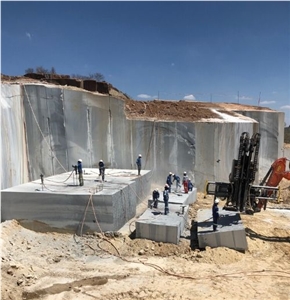A Trip Through Granite Quarries in South Africa: Unveiling Nature's Virtuosity
A Trip Through Granite Quarries in South Africa: Unveiling Nature's Virtuosity
Blog Article
Discovering the Rich History and Lasting Practices of Granite Quarrying
As we depend on the precipice of revealing the complex tapestry of granite quarrying, a trip with time reveals not simply the physical act of extracting rock yet likewise the cultural and historic importance woven right into the extremely fabric of this technique. From the ancient beginnings that laid the structure for modern-day quarrying strategies to the sustainable techniques that are shaping the future of this market, each chisel mark on granite surfaces narrates waiting to be discovered (granite quarries in south africa). The legacy of granite quarrying stretches far beyond plain removal; it is a testimony to human resourcefulness, strength, and the enduring appeal of this marvelous stone
Old Beginnings of Granite Quarrying
Dating back to old worlds, the technique of quarrying granite has been an indispensable part of human background and architectural innovation. The earliest evidence of granite quarrying go back to ancient Egypt, where huge pyramids and complex sculptures were crafted from this resilient rock. The Egyptians utilized primitive tools to remove granite blocks from quarries, showcasing the significance of this product in their monumental buildings.
Moving on in history, the Greeks also made considerable payments to the quarrying of granite. The Greeks used granite in numerous building marvels, such as holy places and statuaries, demonstrating their skill in shaping and sculpting this hardy stone. The Romans additionally improved the techniques of quarrying granite, employing innovative devices like chisels and hammers to essence and form granite for their iconic structures.
Via the centuries, the practice of quarrying granite has actually advanced, with modern technologies improving efficiency while keeping the classic appeal of this natural stone - granite quarries in south africa. From old human beings to contemporary home builders, the heritage of granite quarrying remains to form our world
Development of Quarrying Strategies
The evolution of quarrying methods has actually been marked by a continuous progression towards higher efficiency and accuracy in drawing out granite. From the basic techniques employed by our forefathers to the advanced modern technologies used in contemporary quarrying operations, the industry has undertaken substantial advancements. Early quarrying strategies entailed hand-operated labor with fundamental tools such as chisels, hammers, and wedges to extract granite blocks from the planet. As human beings advanced, methods like fire-setting and primitive explosives were introduced to promote the removal process.
Advancements in computer-controlled tools and 3D modeling have actually enhanced quarrying operations, leading to marginal environmental effect and boosted sustainability techniques. As the need for granite proceeds to climb, the development of quarrying methods stays integral to conference industry needs efficiently and sustainably.
Cultural Relevance of Granite
Granite holds a profound social value throughout different people due to its long-lasting visibility in architectural masterpieces and admired monoliths. The social importance of granite expands beyond its physical characteristics; it embodies durability, stability, and timelessness, making it a sign of enduring traditions and traditions.

Sustainable Practices in Quarrying
In the middle of the rich history of granite quarrying and its cultural relevance exists an expanding focus on lasting practices within the sector. As ecological awareness and concerns concerning source exhaustion have heightened worldwide, the quarrying sector he said has actually significantly welcomed lasting techniques to lessen its influence on the atmosphere and surrounding communities.

Moreover, improvement and rehabilitation of quarry sites post-extraction are essential to lasting practices. By bring back quarried locations to a natural or useful state, such as producing wildlife habitats or entertainment spaces, quarriers can offset the environmental impact of their procedures and add positively to the local ecosystem.
Heritage of Granite Quarrying
With a historical backdrop soaked in craftsmanship and industrial progression, what enduring influence has granite quarrying left on the landscape of contemporary society? The tradition of granite quarrying look what i found transcends simple extraction practices; it has shaped architectural marvels, urban landscapes, and social heritage worldwide. The durable nature of granite has made it a preferred selection for monoliths, structures, and framework, standing as a testimony to the skill and creativity of quarry workers across generations.
Furthermore, the economic footprint of granite quarrying can not be ignored. The market continues to offer employment possibility and drive local economies in areas where granite removal prevails. It has also stimulated technical innovations in quarrying strategies and devices, resulting in much more efficient and their explanation lasting techniques.
In regards to sustainability, the legacy of granite quarrying consists of efforts to mitigate ecological impacts with reclamation jobs and responsible source management. By stabilizing economic rate of interests with environmental stewardship, the market strives to make certain that future generations can continue to take advantage of this enduring natural deposit.
Verdict

Report this page